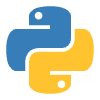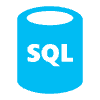5 Signs Your Business Is Ready for a Data Science Freelancer

5 Signs Your Business Is Ready for a Data Science Freelancer
Table of Contents
Sign #1: Data Overload Without Clear Direction
1. Tailored Explorations
Sign #2: Budget Constraints But Big Analytics Goals
2. Flexible Spending
Sign #3: Overworked In-House Teams
3. Timely Relief
Sign #4: Specific Short-Term Projects
4. Clear Deliverables
Sign #5: Need for Specialized Skills
5. On-Demand Expertise
Practical Steps for a Successful Freelance Partnership
Commission-Free Momentum With Contra
FAQs about Hiring a Data Science Freelancer
How do I share sensitive data safely?
How quickly can I see tangible results?
Can a freelance data scientist handle complex tasks alone?
Looking Ahead
5 Signs Your Business Is Ready for a Data Science Freelancer
Table of Contents
Sign #1: Data Overload Without Clear Direction
"Having data without strategy is like having ingredients without a recipe. You’ll just keep snacking." 🍪
1. Tailored Explorations
Sign #2: Budget Constraints But Big Analytics Goals
“Big goals and small budgets aren’t mutually exclusive. They're just a scheduling problem.” 🗓️
2. Flexible Spending
Sign #3: Overworked In-House Teams
3. Timely Relief
Sign #4: Specific Short-Term Projects
"If the problem fits in a sprint, it probably doesn’t need a seat."
4. Clear Deliverables
Sign #5: Need for Specialized Skills
“Most teams don’t lack intelligence—they lack context for niche problems.”
5. On-Demand Expertise
“It’s not just about handing over the keys—good freelancers leave behind a map.” 🗺️
Practical Steps for a Successful Freelance Partnership
Commission-Free Momentum With Contra
“If the contract says $5,000, the payment is $5,000. No math gymnastics 🧮.”
FAQs about Hiring a Data Science Freelancer
How do I share sensitive data safely?
How quickly can I see tangible results?
Can a freelance data scientist handle complex tasks alone?
Looking Ahead
Posted Apr 9, 2025
5 signs your business is ready for a data science freelancer—learn when to hire, what to expect, and how to get results without a full-time hire.










